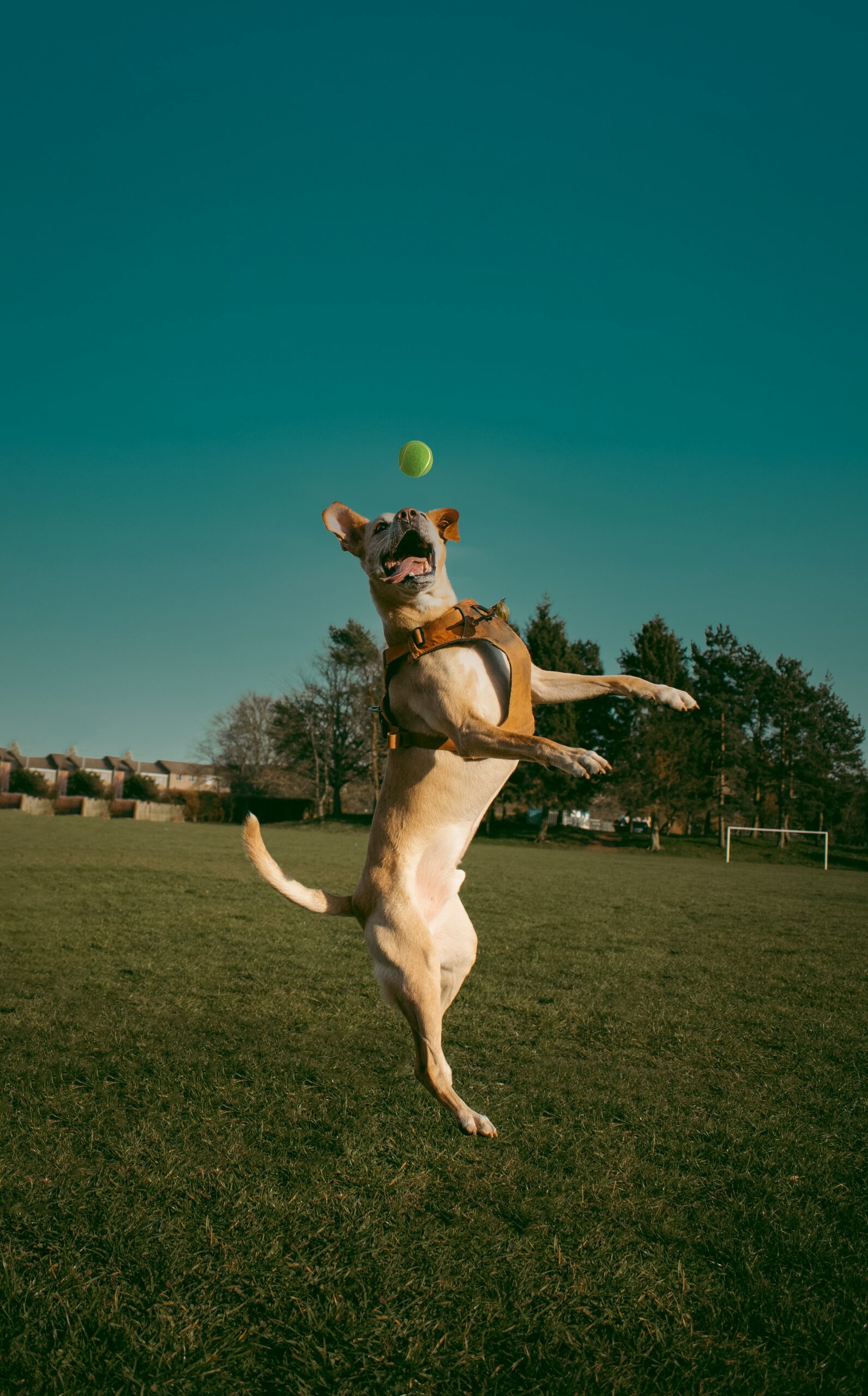Understanding Color Impairment in Dogs: Unveiling the Truth Behind their Vision
A brief description for the article could be: Exploring the causes and effects of color impairment in dogs, including their unique dichromatic vision and limited ability to see red and green colors, as well as the impact on their daily life and methods for testing and diagnosis.
Color Vision in Dogs
Dogs’ color vision is dichromatic, which means they have two types of cones in their eyes that enable them to see blue and yellow. This unique color perception is quite different from humans, as dogs cannot see red and green colors very well. To understand this better, imagine a scenario where a human and a dog are looking at a field of red flowers. While the human perceives a vibrant red color, the dog sees a different shade, perhaps closer to brown or gray, due to their limited red color perception.
Moreover, dogs’ visual abilities go beyond their color perception. Their superior night vision, motion detection, and broader peripheral vision allow them to navigate and survive in various environments. For example, a dog’s ability to detect motion enables them to track and hunt prey effectively, and their exceptional night vision allows them to remain vigilant even in low-light conditions. These unique visual capabilities have been evolutionarily advantageous for dogs, aiding them in their roles as both domestic pets and working animals.
Types of Cones in Dog’s Eyes
Dogs have two types of cones in their eyes, enabling them to see blue and yellow colors. This dichromatic vision results in their limited color perception compared to humans. Additionally, dogs have more rods in their eyes, enhancing their night vision and their ability to detect motion, compensating for their reduced color perception.
To illustrate the unique color perception of dogs, it’s important to understand that they see the world through a different color spectrum compared to humans. For instance, blue, blue-green, and violet appear as varying shades of blue to dogs, and they cannot differentiate between brightness differences as effectively as humans. This distinction in color perception demonstrates the fascinating way in which dogs interpret the visual world around them, emphasizing the significant differences in color vision between dogs and humans.
Moreover, the dichromatic vision of dogs is not a limitation but an adaptation that supports their survival in various environments. For example, dogs’ exceptional night vision and superior motion detection allow them to thrive in low-light conditions and perceive movement effectively, which are valuable assets for their survival, especially in the wild. This contrast in visual abilities between dogs and humans showcases the diverse ways in which different species perceive and interact with their surroundings, shedding light on the remarkable adaptations that enable dogs to navigate their environment.
Understanding Color Impairment in Dogs
The understanding of color impairment in dogs is often clouded by the misconception that they are completely colorblind. However, dogs are not colorblind; they are color impaired. They possess the ability to perceive a limited range of colors, from blue to yellow, but struggle to differentiate red-based colors. It is important to recognize that dogs’ color impairment is not a result of complete colorblindness but rather a limitation in their color perception.
This limitation in color perception can have significant implications for dogs in their daily lives. For example, when playing fetch, a dog may have difficulty distinguishing a red ball from the green grass. In contrast, a bright blue or yellow ball would be much easier for them to spot. Moreover, understanding that dogs have a reduced ability to perceive certain colors can lead to more thoughtful choices in the design of their toys, accessories, and even their surroundings to help them navigate the environment more effectively.
The misconception that dogs are completely colorblind is perpetuated by various media sources such as movies and TV shows, which often depict dogs as seeing the world in black and white. This inaccurate portrayal has led to widespread misunderstanding about dogs’ actual visual abilities. Therefore, it is essential to educate pet owners and the general public about the true nature of dogs’ color vision to ensure that their specific needs are adequately met and to foster a deeper understanding of their sensory experiences.
Causes of Color Impairment in Dogs
Color impairment in dogs is primarily caused by genetic factors. Research has shown that dogs have two types of cones in their eyes, which allow them to see blue and yellow colors but not red-based colors. This dichromatic vision affects their perception of the world, as they cannot differentiate red and green colors well. Due to these genetic factors, dogs are unable to perceive the full spectrum of colors in the same way humans do.
For example, when a dog is looking at a field of vibrant flowers, they may not be able to distinguish the red blooms from the green leaves as effectively as a human would. This limitation in color perception impacts their ability to navigate and interact with their environment. While there is currently no available treatment to correct a dog’s color impairment, adjustments can be made in their surroundings to compensate for this visual limitation. Using bright and bold colors in their environment can assist dogs in seeing objects more clearly, contributing to their overall visual experience and well-being.
Understanding the genetic causes of color impairment in dogs is crucial for creating a more inclusive environment for our canine companions. By recognizing their visual limitations and making simple adjustments, we can help improve their daily lives and ensure they have the best possible experience interacting with the world around them.
Impact of Color Impairment on Dogs’ Daily Life
Color impairment in dogs significantly impacts their daily lives, as it influences their ability to distinguish between different objects based on color. For example, dogs may struggle to differentiate between red and green objects, which can affect their interactions with toys, food, and even certain hazards in their environment. This limitation in color perception can be particularly challenging for dogs in activities like retrieving specific objects based on color cues or identifying certain colored signals or indicators in training or working environments.
Moreover, color impairment in dogs does not solely define their visual experience. While they may have difficulty discerning between certain colors, dogs compensate for this limitation with remarkable adaptations in other visual aspects. For instance, dogs possess superior night vision, which allows them to see well in dimly lit environments, such as during evening walks or in low-light indoor areas. In addition, their ability to detect motion and their broader range of peripheral vision provide them with a comprehensive understanding of their surroundings, even in the absence of vibrant colors. These visual abilities play a crucial role in helping dogs navigate their environment, hunt, and remain vigilant, showcasing the resilience and adaptability of their sensory capabilities.
Testing and Diagnosis of Color Impairment in Dogs
When it comes to testing and diagnosing color impairment in dogs, there are specific methods and tools that are employed to assess their color vision capabilities. One such method is the Ishihara’s diagnostic test for deuteranopia, which involves using color plates to determine if a dog has difficulty distinguishing between certain colors. Additionally, researchers have developed animated targets, such as moving cats with different color shades, to observe how dogs respond to specific colors and movements. These innovative approaches provide valuable insights into how dogs perceive and differentiate colors, contributing to a deeper understanding of their visual abilities.
For example, in a study utilizing animated cat targets with color shades derived from the Ishihara plates, dogs with red-green color blindness were observed to interpret the movements of the cat differently based on the specific color shades used. By analyzing the dogs’ responses to these stimuli, researchers were able to gain crucial knowledge about the extent of color impairment in dogs and how it impacts their daily experiences. These findings underscore the significance of employing diverse and interactive methods to accurately diagnose color impairment in dogs, ultimately leading to tailored support and care for these animals.



